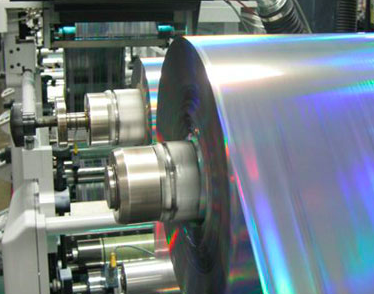
In collaboration with Margreff
Cold foil printing is a finishing technique that is still relatively unknown, yet produces strikingly beautiful finishes for offset printing products. It emphasizes fine lines as clearly as large surfaces. Cold foil is primarily used to produce high-quality brochures, packaging or POS products. In the following, we answer the most important questions about this sophisticated technique:
What is behind the term cold foil? And what are the benefits of cold foil?
Compared to hot foil stamping, working with cold foil produces a matt, less glossy effect and has less scratch resistance. In contrast to hot foil stamping, cold foil printing does not require high temperatures, additional tools, and above all no complex and costly offline process with hot foil stamping machines. But there is also a disadvantage: The cold foil process is not really suitable for papers with an open surface structure (uncoated papers), because the printed image would vary on each sheet. It is mandatory to use a coated material (EXTRAMATT, MATT, SILK RECYCLING or GLOSS) when working with the liquid adhesive used for cold foil finishing. The term describes the transfer of a metallic or iridescent foil in the printing press. Therefore, it is an inline printing method, which – in contrast to hot foil processing – requires neither stamping dies nor additional steps in the production process. One of the great advantages of cold foil is the available colour range with a single foil. Practical applications of this process are almost limitless.
What makes cold foil special?
Cold foil is special because it is so versatile. The number of effects that can be achieved through direct printing in register with process colours and/or special colours is unlimited. The producers of foil have also started to offer different foil designs, such as holo foil or special colour shades.
What are particularly suitable applications for cold foil and typical cold foil projects?
The cold foil transfer is suitable for a diverse range of products. Due to its striking, metallic sheen, the best use for cold foil is probably at the POS, the touchpoint where the consumer interacts with the product. Yet cold foil can also achieve fantastic finishing effects for products that feature slightly less prominently. Nowadays, books and substantial annual reports are frequently finished with cold foil.
How does the cold foil technique work?
Cold foil is applied to the substrate (coated paper) with liquid adhesive. The adhesive is transferred to the paper in the first printing unit. Subsequently, the cold foil is rolled over the so-called FOILER and fed onto the paper. The previously applied adhesive removes the foil from the carrier. Any waste is wound up and discarded.
How is the future of cold foil? What are the developments to look forward to?
After years of development, cold foil has finally become widely accepted as a finishing technique. In combination with UV varnishes or celloglazing, cold foil can be staged even more effectively. The manufacturers of foil also promise many alternative designs for the coming years. In addition, digital cold foil offers many fascinating patterns for highly individual printing solutions.